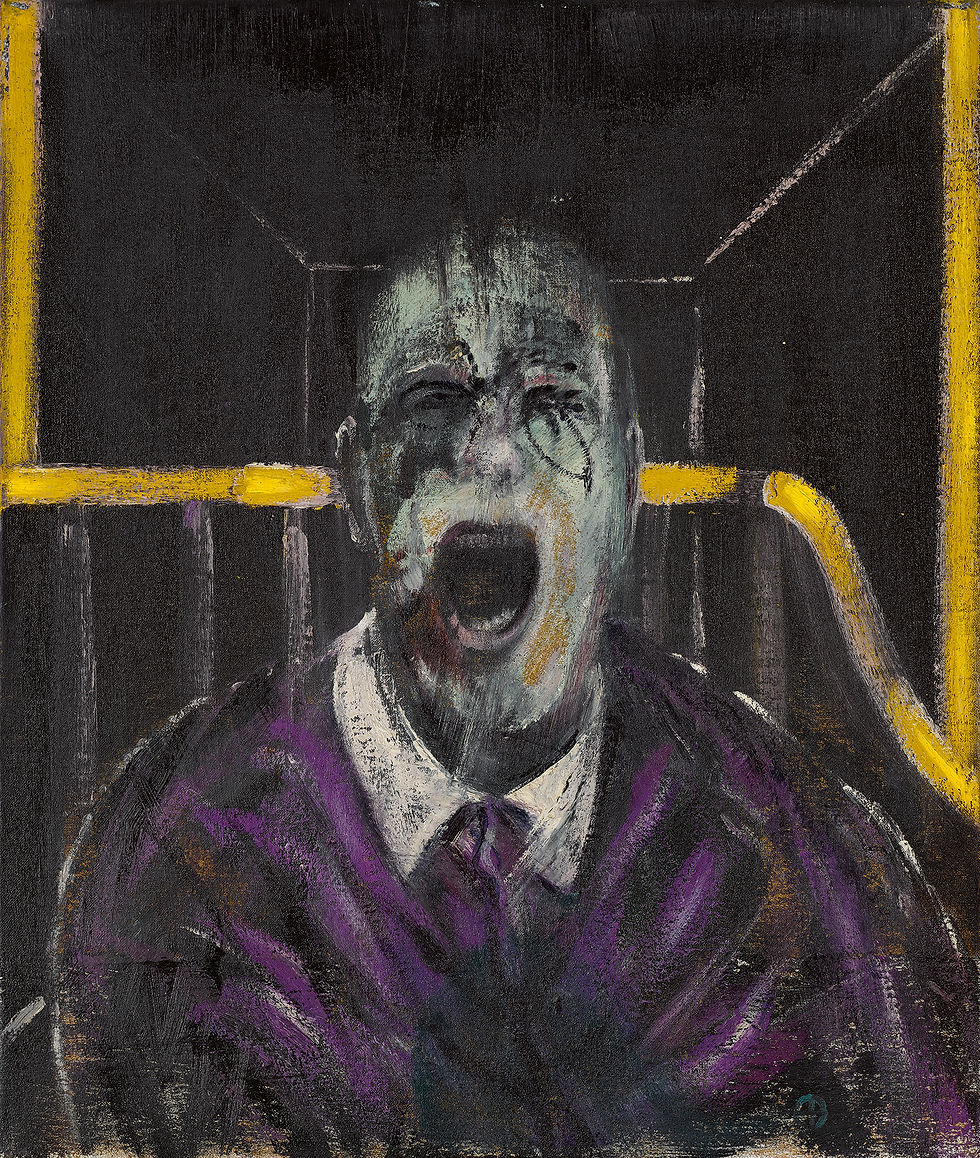拍賣筆記 Vol.30 蘇富比核心業務降88%拍賣業務降25%(同比佳士得降22%) - Sotheby’s Earning Plunge, Core Business drop 88% while Auction drops 25%.
- SACA
- Aug 31, 2024
- 6 min read
根據金融時報 Financial Times 2024年8月31日報導:
蘇富比(Sotheby’s)近日報告,其核心收益下跌了88%,拍賣銷售額也下降了25%,反映出藝術市場的寒意正影響這家業界最著名的經紀公司之一。
蘇富比主要拍賣業務的上半年數據揭示了該集團在本月早些時候與阿布達比達成投資協議之前所面臨的財務壓力。
中國的奢侈品消費減弱是導致對藝術品需求下降的因素之一,這一趨勢同樣影響到了蘇富比及其歷史悠久的競爭對手佳士得(Christie’s)。
蘇富比的一場重要拍賣在5月未達預期,當時一幅弗朗西斯·培根(Francis Bacon)畫作的中標價格未能達到其3,000萬至5,000萬美元估價範圍的下限,該畫作描繪的是他的情人喬治·戴爾(George Dyer)。
本月早些時候,阿布達比的主權財富基金ADQ通過10億美元的資本募集,獲得了蘇富比的少數股權,法國-以色列億萬富翁帕特里克·德拉希(Patrick Drahi)一直在努力削減其商業帝國中的債務。
在達成這筆交易之前,蘇富比告知貸方,其2024年上半年的利息、稅項、折舊及攤銷前利潤(Ebitda)驟降88%,僅為1,810萬美元。即使在剔除了遣散費和法律和解費等額外成本後,蘇富比的調整後Ebitda仍下跌了60%,至6,740萬美元。
蘇富比還在2024年上半年錄得5.585億美元的收入,較去年同期的7.123億美元下降了22%,這是根據蘇富比與貸方共享的收益報告中所述。
這些數據僅涵蓋蘇富比的主要拍賣業務,不包括母公司BidFair旗下其他部門所產生的收益,例如為藝術品收藏家提供貸款的金融服務部門。
蘇富比的業績放緩,與上個月佳士得公開報告的同期拍賣銷售下降22%的情況相似。
此外,蘇富比的結果顯示,該公司打算將計劃中的資本募集中的7億美元用於“降低公司的槓桿率”,與ADQ的交易預計將於2024年第四季度完成。
ADQ主權財富基金成立於2018年,負責推動阿布達比這個石油富裕酋長國的發展,該基金由阿聯酋有影響力的國家安全顧問謝赫塔赫農·本·扎耶德·阿勒納哈揚(Sheikh Tahnoon bin Zayed al-Nahyan)主持。阿布達比的盧浮宮博物館分館於2017年開幕。
蘇富比報告稱,截至6月底,該公司淨“長期債務”超過18億美元,這表明即使在完成資本募集後,其仍將持有超過10億美元的此類債務。該公司的總負債達43億美元。
蘇富比集團今年也通過創新的方式籌集資金,其金融服務子公司在四月通過新債券籌得7億美元,這些債券由拍賣行向藝術品收藏家提供的貸款作為擔保。
德拉希(Patrick Drahi)於2019年通過槓桿收購接管了蘇富比,這家擁有數百年歷史的拍賣行在上市三十年後重回私人所有,這也讓德拉希直接與擁有佳士得的法國億萬富翁弗朗索瓦·皮諾(François Pinault)展開競爭。
這筆交易為德拉希帶來了一件象徵性的資產,與他旗下的阿爾蒂斯(Altice)商業帝國並列。德拉希在過去十年間通過一系列收購,將阿爾蒂斯從一家小眾有線電視公司轉變為全球電信巨頭。
如今,面對不斷上升的利率以及市場對阿爾蒂斯一位聯合創始人遭刑事調查的擔憂,德拉希越來越多地出售資產,以應對其集團超過600億美元的債務。
本月早些時候,德拉希同意將他在英國電信集團(BT Group)中的近25%股份出售給印度億萬富翁蘇尼爾·巴蒂·米塔爾(Sunil Bharti Mittal)的企業集團。此前,德拉希曾從銀行大量借款,用於購買該英國電信運營商的股份。
2024 AUG 31
According to Financial Times Report:
Sotheby’s has announced a dramatic 88 percent drop in its core earnings and a 25 percent decrease in auction sales, reflecting the challenges currently facing one of the art industry’s most prominent brokers due to a downturn in the market.
The financial strain on Sotheby’s main auction business became apparent in its first-half results, which were released just before the company secured an investment deal with Abu Dhabi earlier this month.
A decline in luxury spending in China is one of the key factors impacting the demand for fine art, adversely affecting both Sotheby’s and its longstanding competitor, Christie’s.
In a high-profile auction held in May, Sotheby’s saw a notable underperformance when the winning bid for a Francis Bacon portrait of George Dyer, his lover, failed to reach the low end of its estimated range of $30 million to $50 million.
Earlier this month, the Abu Dhabi-based sovereign wealth fund ADQ agreed to acquire a minority stake in Sotheby’s through a $1 billion capital raise. The auction house’s current owner, Franco-Israeli billionaire Patrick Drahi, is working to reduce debt within his business empire.
Prior to the deal, Sotheby’s informed its lenders that its earnings before interest, taxes, depreciation, and amortization (Ebitda) had plunged by 88 percent to just $18.1 million in the first half of 2024. Even after adjusting for additional costs, such as severance pay and legal settlements, Sotheby’s adjusted Ebitda still saw a 60 percent decline, falling to $67.4 million.
The company reported $558.5 million in revenue for the first six months of 2024, representing a 22 percent decline compared to the $712.3 million earned in the same period the previous year, as stated in an earnings report shared with its lenders.
These figures pertain to Sotheby’s main auction business and do not account for earnings from other divisions of its parent company, BidFair, such as its financial services arm that provides loans to art collectors.
Sotheby’s declined to provide any additional comments.
This downturn at Sotheby’s mirrors a similar 22 percent decline in auction sales reported last month by Christie’s for the same period.
Additionally, Sotheby’s disclosed plans to allocate $700 million from the upcoming capital raise to reduce the company’s leverage, with the transaction involving ADQ expected to be finalized in the fourth quarter of 2024.
Established in 2018, the ADQ sovereign wealth fund is responsible for driving development in the oil-rich emirate of Abu Dhabi and is led by the UAE’s influential national security adviser, Sheikh Tahnoon bin Zayed al-Nahyan. The Louvre Abu Dhabi, a branch of the famous Paris museum, opened in the emirate in 2017.
As of the end of June, Sotheby’s reported having more than $1.8 billion in net long-term debt, indicating that even after the capital raise, it will still hold over $1 billion in such debt. The company’s total liabilities currently stand at $4.3 billion.
As of the end of June, Sotheby’s reported having more than $1.8 billion in net long-term debt, indicating that even after the capital raise, it will still hold over $1 billion in such debt. The company’s total liabilities currently stand at $4.3 billion.
This year, Sotheby’s group has explored innovative methods to secure funding, with its financial services division raising $700 million in April by issuing new bonds. These bonds are backed by loans that the auction house extends to art collectors, demonstrating the group's creative approach to managing its finances.
Patrick Drahi acquired Sotheby’s in a leveraged buyout in 2019, bringing the historic auction house back into private ownership after it had spent three decades as a publicly traded company on the New York Stock Exchange. This acquisition placed Drahi in direct competition with François Pinault, the French billionaire who owns Christie’s, a key rival in the auction industry.
The purchase of Sotheby’s added a prestigious asset to Drahi’s Altice business empire, a company he has transformed from a specialized cable firm into a global telecommunications giant over a decade of aggressive acquisitions.
Currently, Drahi is navigating a challenging financial landscape marked by rising interest rates and market concerns stemming from a criminal investigation involving one of Altice’s co-founders. In response, Drahi has been actively divesting assets to address the group's substantial debt, which exceeds $60 billion.
In a recent move, Drahi agreed to sell nearly 25 percent of his stake in BT Group to the conglomerate owned by Indian billionaire Sunil Bharti Mittal. This decision follows years of heavy borrowing from banks to accumulate shares in the British telecommunications operator.















Comentários